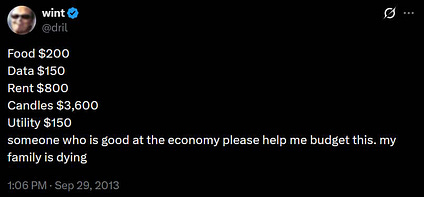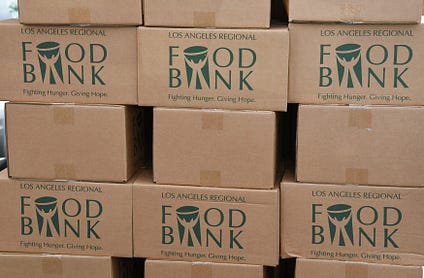How Entrepreneurship is Driving Poverty Reduction in Nigeria – The Borgen Project

Report on Entrepreneurship as a Driver for Sustainable Development in Nigeria
Introduction: Aligning Grassroots Enterprise with the Sustainable Development Goals
In Nigeria, where a significant portion of the population lives below the poverty line, a grassroots economic movement is proving critical to achieving Sustainable Development Goal 1 (No Poverty). This report analyzes the role of informal entrepreneurship, termed “Growth from Below,” as the nation’s most effective engine for poverty reduction. These household-level economic activities, while often invisible to the formal economy, are fundamental to advancing several SDGs, including SDG 2 (Zero Hunger) and SDG 8 (Decent Work and Economic Growth).
Economic Context and Challenges to SDG 8
Macroeconomic Pressures
Nigeria’s progress toward SDG 8 is hampered by several macroeconomic factors. Key challenges include:
- Economic growth rates that are insufficient to match population expansion.
- Stagnant GDP per capita since 2014.
- High inflation, primarily driven by food and fuel prices.
- Projected economic growth below the continental average.
These conditions undermine formal employment and economic stability, making the contributions of the informal sector even more vital.
The Informal Sector as a Foundation for Resilience
Research from the Institute of Development Studies (IDS) indicates that informal investments and micro-enterprises serve as a primary mechanism for households to escape poverty. Government interventions and large-scale investments often fail to produce substantial change at the community level. In contrast, self-initiated economic activities provide a resilient foundation for livelihoods, directly contributing to the achievement of SDG 1 (No Poverty) and SDG 2 (Zero Hunger) through localized, sustainable efforts.
Analysis of “Growth from Below” and its Impact on SDGs
Core Activities and Contributions
The “Growth from Below” model is characterized by diverse micro-level economic activities that form a critical safety net. These include:
- Small-scale agriculture (e.g., maize and guinea corn farming).
- Petty trading in local markets.
- Livestock rearing for income and savings.
- Local food processing, such as palm oil production.
These enterprises not only generate income to lift families out of poverty (SDG 1) but also enhance food security and create self-sustaining local economies (SDG 2).
Empowering Women Entrepreneurs for Gender Equality (SDG 5)
The Central Role of Women in the Informal Economy
Women are at the forefront of Nigeria’s informal economy, operating as roadside vendors, small-scale processors, and market traders. Their entrepreneurial activities are fundamental to household survival and community well-being. Empowering these women is a direct pathway to achieving SDG 5 (Gender Equality), which in turn accelerates progress on poverty reduction and economic growth.
Systemic Barriers to Achieving SDG 5
Despite their crucial role, women entrepreneurs face significant obstacles that hinder progress toward SDG 5 and SDG 10 (Reduced Inequalities). These barriers include:
- A disconnect between national policies and grassroots implementation.
- Inconsistent and short-lived social protection programs.
- Lack of legal recognition for their businesses.
- Limited access to formal finance, forcing reliance on high-interest informal loans.
- Economic shocks, such as the cashless policy and fuel subsidy removal, which have depleted their working capital.
Policy Recommendations for an Enabling Environment
Fostering Decent Work and Economic Growth (SDG 8)
To transform the informal sector into a more robust engine for sustainable development, government policy must shift from revenue extraction to supportive enablement. Key recommendations include:
- Implement “light-touch” registration systems to legitimize informal enterprises and improve their access to formal support.
- Introduce presumptive tax holidays for new micro-firms to encourage growth and investment.
- Abolish the practice of multiple taxation and harassment by various state and local authorities, which dissipates meager incomes.
Targeted Support for Women-Led Enterprises (SDG 5 & SDG 10)
Achieving gender equality and reducing inequalities requires targeted policies that empower women entrepreneurs. The following actions are recommended:
- Fast-track the Women’s Rights and Inheritance Bill to secure economic rights for women.
- Enforce joint land titling to provide women with crucial assets for collateral and investment.
- Mandate that at least 40% of Micro, Small, and Medium Enterprises (MSME) grants are allocated to women-led firms.
- Develop and deploy bundled support packages that combine skills training, working capital, and insurance to build resilience.
Conclusion: A Grassroots Blueprint for Achieving the SDGs
The experience in Nigeria demonstrates that sustainable development can be effectively driven from the bottom up. The informal entrepreneurship of millions, particularly women, represents a powerful, existing strategy for poverty eradication. For Nigeria to advance its 2030 Agenda, policy must meet citizens where they are, recognizing and reinforcing the systems of resilience that already exist. By supporting its informal entrepreneurs, Nigeria can create a sustainable, community-led development model that aligns with the principles of SDG 17 (Partnerships for the Goals) and offers a blueprint for progress across the continent.
Analysis of Sustainable Development Goals in the Article
1. Which SDGs are addressed or connected to the issues highlighted in the article?
- SDG 1: No Poverty – The article’s central theme is poverty reduction in Nigeria, directly addressing the goal of ending poverty in all its forms. It opens by stating that “nearly two-thirds of citizens live on less than $2 a day” and explores entrepreneurship as a key engine for poverty reduction.
- SDG 2: Zero Hunger – The article connects poverty to hunger, noting that economic struggles “translate into hunger.” It also highlights the government’s declaration of a “state of emergency on food security” and focuses on the role of small-scale agriculture, such as farming maize and guinea corn, backyard gardening, and food processing, in providing livelihoods and food.
- SDG 5: Gender Equality – The article dedicates a section, “Women at the Center,” to the role of women in the informal economy. It points out that women are the “majority of micro-entrepreneurs” but face significant barriers, including lack of access to formal finance and legal recognition. It calls for specific policy changes to empower women economically.
- SDG 8: Decent Work and Economic Growth – The entire article discusses the importance of the informal economy and micro-entrepreneurship (“petty trading, livestock rearing and food processing”) in creating livelihoods. It critiques the lack of support for these activities and advocates for policies that promote productive activities, formalization, and the growth of micro-enterprises to achieve sustainable economic growth.
- SDG 10: Reduced Inequalities – The article highlights the disconnect between top-down government policies and the reality at the grassroots level, an issue of inequality in access to support and resources. It specifically focuses on empowering vulnerable groups, particularly women entrepreneurs, to ensure they are included in national growth and can achieve upward mobility.
2. What specific targets under those SDGs can be identified based on the article’s content?
-
SDG 1: No Poverty
- Target 1.1: Eradicate extreme poverty. The article directly addresses this by focusing on the large population in Nigeria living on less than $2 a day and exploring “growth from below” as a strategy to lift them out of poverty.
- Target 1.2: Reduce at least by half the proportion of men, women and children of all ages living in poverty. The article’s entire focus is on “poverty reduction” strategies driven by household-level economic activity.
- Target 1.4: Ensure that all men and women, particularly the poor and vulnerable, have equal rights to economic resources. This is highlighted in the discussion on women’s lack of “access to formal finance” and the call for “joint land titling” and inheritance rights.
-
SDG 2: Zero Hunger
- Target 2.1: End hunger and ensure access by all people to safe, nutritious and sufficient food. The article mentions the government’s “state of emergency on food security” and describes how individuals, like a widow in Borno, engage in growing vegetables to “feed her children.”
- Target 2.3: Double the agricultural productivity and incomes of small-scale food producers, in particular women. The article provides examples of small-scale farmers, backyard gardeners, and a mother who installed a palm oil press, all of whom represent the small-scale producers this target aims to support.
-
SDG 5: Gender Equality
- Target 5.5: Ensure women’s full and effective participation and equal opportunities for leadership in economic life. The article points out that while women form the “majority of micro-entrepreneurs,” policies are rarely on their side, indicating a lack of equal opportunity in economic life.
- Target 5.a: Undertake reforms to give women equal rights to economic resources, as well as access to ownership and control over land. This is directly referenced through the call to fast-track the “Women’s Rights and Inheritance Bill” and enforce “joint land titling.”
-
SDG 8: Decent Work and Economic Growth
- Target 8.3: Promote development-oriented policies that support productive activities, decent job creation, entrepreneurship, and encourage the formalization and growth of micro-, small- and medium-sized enterprises. The article advocates for this by recommending “‘light-touch’ registration systems, presumptive tax holidays for new micro-firms and bundled packages combining training, working capital and insurance” to support the informal sector.
- Target 8.10: Strengthen the capacity of domestic financial institutions to encourage and expand access to banking, insurance and financial services for all. The article implies a failure to meet this target by describing a farmer with “no insurance, no grant and no bank account” and women who “rely on informal loans” due to a lack of access to formal finance.
-
SDG 10: Reduced Inequalities
- Target 10.2: Empower and promote the social and economic inclusion of all. The article argues for supporting informal entrepreneurs, especially women, by “acknowledging them as central to national growth, not as side characters in need of rescue,” which is a call for their economic inclusion.
3. Are there any indicators mentioned or implied in the article that can be used to measure progress towards the identified targets?
-
Indicators for SDG 1 (No Poverty)
- Indicator 1.1.1 (Proportion of population below the international poverty line): The article explicitly mentions this by stating, “nearly two-thirds of citizens live on less than $2 a day.” This statistic serves as a baseline measurement of extreme poverty.
-
Indicators for SDG 5 (Gender Equality)
- Indicator 5.a.1 (Proportion of total agricultural population with ownership or secure rights over agricultural land, by sex): This is implied by the recommendation to enforce “joint land titling,” suggesting that tracking the percentage of women with legal title to land is a key measure of progress.
- Implied Indicator (Proportion of financial support for enterprises directed to women): The article suggests a specific, measurable indicator by calling for “at least 40% of MSME grants” to go to women-led firms.
-
Indicators for SDG 8 (Decent Work and Economic Growth)
- Indicator 8.1.1 (Annual growth rate of real GDP per capita): The article uses this indicator to describe Nigeria’s economic situation, noting that “Since 2014, GDP per capita has stagnated.”
- Implied Indicator (Number of formalized micro-enterprises): The recommendation for “‘light-touch’ registration systems” implies that an increase in the number of registered informal businesses would be a key indicator of policy success.
- Implied Indicator (Tax burden on micro-enterprises): The article’s description of “multiple taxation” from community, state, and local authorities suggests that a reduction in the number and amount of taxes levied on small businesses could be a measurable indicator of a more supportive environment.
4. Summary Table of SDGs, Targets, and Indicators
| SDGs | Targets | Indicators |
|---|---|---|
| SDG 1: No Poverty |
|
|
| SDG 2: Zero Hunger |
|
(None explicitly mentioned) |
| SDG 5: Gender Equality |
|
|
| SDG 8: Decent Work and Economic Growth |
|
|
| SDG 10: Reduced Inequalities |
|
(None explicitly mentioned) |
Source: borgenproject.org
What is Your Reaction?
 Like
0
Like
0
 Dislike
0
Dislike
0
 Love
0
Love
0
 Funny
0
Funny
0
 Angry
0
Angry
0
 Sad
0
Sad
0
 Wow
0
Wow
0















































/environment-climate-change-and-health-(ech)/water-sanitation-hygiene-and-health-(wsh)/landfill-tuvalu-36092.tmb-1200v.jpg?sfvrsn=5c21fe40_1#)


.jpg.webp?itok=0ZsAnae9#)


























